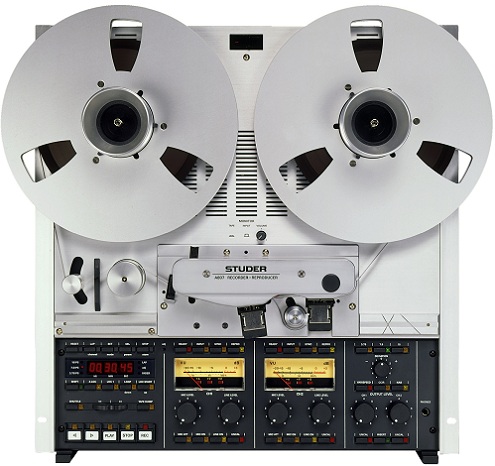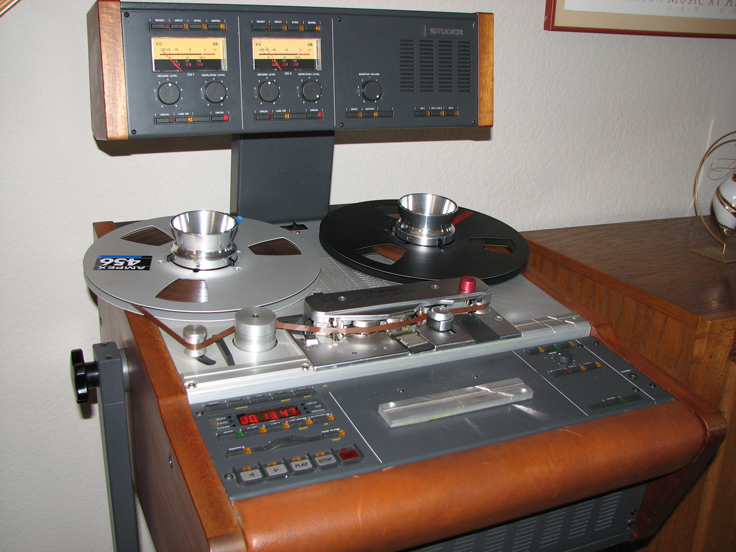Why is there a switch at all?I'm sure that's all true.
But somehow most electronics sold in the USA are already preset for local voltage.
Ah, that's what I get for buying cheap and trashy...
-
WANTED: Happy members who like to discuss audio and other topics related to our interest. Desire to learn and share knowledge of science required. There are many reviews of audio hardware and expert members to help answer your questions. Click here to have your audio equipment measured for free!
You are using an out of date browser. It may not display this or other websites correctly.
You should upgrade or use an alternative browser.
You should upgrade or use an alternative browser.
Millivolt Meter Recommendation for Audio
- Thread starter watchnerd
- Start date
Few, if any, devices in my house have a voltage switch.Isn't that pretty normal?
Not everything electronic I own has a switch (e.g. computers that use external auto sensing power supplies come immediately to mind), but some of the gear I own certainly does.
restorer-john
Grand Contributor
Why is there a switch at all?
Auto sensing voltage douber front ends are not remotely as reliable as a physical switch. They can cause all manner of problems when the line voltage drops on 220/230V circuits.
That said, my current DSO has a 110-240V auto switching SMPS. It hasn't blown up yet.
watchnerd
Grand Contributor
- Thread Starter
- #865
Few, if any, devices in my house have a voltage switch.
Auto sensing voltage douber front ends are not remotely as reliable as a physical switch. They can cause all manner of problems when the line voltage drops on 220/230V circuits.
That said, my current DSO has a 110-240V auto switching SMPS. It hasn't blown up yet.
It must be a cost saving measure.
Although my Siglent DSO has an auto sensing supply, too.
restorer-john
Grand Contributor
Few, if any, devices in my house have a voltage switch.
All my test gear on the bench (except the DSO) have physical voltage selector switches for all markets.
It must be a cost saving measure.
Absolutely not. It's a safety decision. In real terms, auto sensing SMPSs only switch between two modes on the primary side, regardless of where you are in the world. There are thresholds and there are situations where a lowish mains voltage in 230V countries can mean the auto-sense trigger to 120V (voltage doubler mode) and the main filter caps blow due to their working voltage being exceeded. A physical switch is much better.
Most of the transformer based test gear products I own have 4 position primary voltage switches. Much of my HiFi gear is physical voltage selectors, either 2 or 4/5 position. Most US gear is just 120V 60Hz. The market is big enough and results in massive cost savings for you guys. Why produce transformers with extra copper for windings you never use? SMPS supplies internally now have 230V primaries and the US market products use a voltage doubler- sometimes automatic sensing, sometimes manual.
Australia is a small market and frequently we got the military PAX destined gear. Specified for every market in the world often with 100, 110-120,127, 220-240V options. The dedicated 127V position was for Saudi Arabia/Mexico.
There are considerable benefits to the multivoltage gear, especially with transformer based amplification. Not the least of which is resale to anywhere in the world.
MakeMineVinyl
Major Contributor
On the ATI NC500 series amplifiers (they have a linear supply) I programmed in a dead band in the auto AC voltage PSU sense between low 240V range and top 120V range so overvoltage of the filter caps can't happen. So if you bought one of those amps, you'd have no problem. I think nobody noticed however.....There are thresholds and there are situations where a lowish mains voltage in 230V countries can mean the auto-sense trigger to 120V (voltage doubler mode) and the main filter caps blow due to their working voltage being exceeded. A physical switch is much better.
MakeMineVinyl
Major Contributor
That makes no sense. Oh well.That will have to wait until the weekend.
Also, apparently to do the full calibration correctly, apparently you're supposed to calibrate the monitor out (not line out) 5-pin DIN voltage first....
Why, I'm not sure.
Why would there need to be a voltage doubler if the output is far below the lowest allowed input?Auto sensing voltage douber front ends are not remotely as reliable as a physical switch. They can cause all manner of problems when the line voltage drops on 220/230V circuits.
That said, my current DSO has a 110-240V auto switching SMPS. It hasn't blown up yet.
Because I couldn't resist the allure of a substantial discount on a nice instrument, there is now a Keithley DMM6500 on my bench. Since we've been discussing AC voltage measurements, I connected it to the AFG output of my MDO3000 and set the latter to output a 1 kHz sine wave at 2.828 Vpp (1 Vrms). Here's a screenshot of the measurement:

The difference from the expected reading of 0.99985 V is greater than the tolerance of the meter, so I guess the AFG is off by a few mV. The graph in the lower half of the display is a nice feature. Now I wonder what might be causing the fluctuations seen there.
The difference from the expected reading of 0.99985 V is greater than the tolerance of the meter, so I guess the AFG is off by a few mV. The graph in the lower half of the display is a nice feature. Now I wonder what might be causing the fluctuations seen there.
watchnerd
Grand Contributor
- Thread Starter
- #872
Because I couldn't resist the allure of a substantial discount on a nice instrument, there is now a Keithley DMM6500 on my bench. Since we've been discussing AC voltage measurements, I connected it to the AFG output of my MDO3000 and set the latter to output a 1 kHz sine wave at 2.828 Vpp (1 Vrms). Here's a screenshot of the measurement:
View attachment 83588
The difference from the expected reading of 0.99985 V is greater than the tolerance of the meter, so I guess the AFG is off by a few mV. The graph in the lower half of the display is a nice feature. Now I wonder what might be causing the fluctuations seen there.
That's a nice graph.
I assume that's a locally captured screenshot via USB or the network?
Yes, it has a web interface that lets you save screenshots. It's also possible to save the sample buffer and analyse the data with whatever software. With the trigger options, it fills the gap between a simple DMM and a scope quite nicely.That's a nice graph.
I assume that's a locally captured screenshot via USB or the network?
How are you liking your new toy?
watchnerd
Grand Contributor
- Thread Starter
- #874
Yes, it has a web interface that lets you save screenshots. It's also possible to save the sample buffer and analyse the data with whatever software. With the trigger options, it fills the gap between a simple DMM and a scope quite nicely.
How are you liking your new toy?
I haven't done more than turn it on so far and test the probe on my tongue.
Scintillating. Are we to get a screenshot of the measurement of your tongue?I haven't done more than turn it on so far and test the probe on my tongue.
Wowowow. Is that a console model or the vertically oriented model?At the moment, I'm pre-occupied with getting the last mile of a Studer A807 shipped from the Netherlands dealt with.


restorer-john
Grand Contributor
Why would there need to be a voltage doubler if the output is far below the lowest allowed input?
OK. I'll try to explain.
Here's a basic SMPS block diagram:
Consider the transformer. It is a fixed ratio primary to secondary and doubling or halving the primary voltage will result in the secondary voltage also doubling or halving.
The output voltage is tightly regulated within a small range using PWM control of the primary side switcher MOSFET/TR. The input rectifier, input filter caps, switching transistor/FETs and transformer need to be optimized for the highest line voltage it will see. Let's say 230V AC. Those caps would need to be 400V caps and rather expensive.
In the US, with only half the line voltage (120V) the transformer being a fixed ratio, will output half the secondary voltage. No matter how much you width modulate that half height primary voltage, the average secondary voltage after filtering will not be even close to your target regulated voltage. The primary side switcher current would also double and be outside the overcurrent range of the controller.
So, what do you do? Do you design SMPS supplies for 110-120V and another for 220-240V? You could, but that's extra SKUs and expense. Each will need dedicated transformers, each with completely different primary/secondary windings and gauges. Each rectifier and primary filter bank will be different- one will have lower voltage higher capacitance and the other higher voltage, lower capacitance. The controller IC will also be different.
Or do you take advantage of a neat little trick?
The voltage doubler. Design all the SMPSs to work on 230V and use low cost primary 200V capacitors wired in series. When presented with half the primary voltage in the US, switch in a primary side voltage doubler. The transformer will always see essentially the same primary voltage and hence the secondary will be within regulation range of PWM controller driving the switcher. The secondary side caps can stay the same values. The current flow in the transformer doesn't change so it can stay the same.
Voltage doubler:
Here is the relay switched voltage doubler implementation in the NAD M-22 amplifier. The SMPS itself, then sees approximately 310-340V DC regardless of where it is used in the world. Minimum losses all round.
Last edited:
That's one way of building it. Then there are the commonly used wide-range supplies that work off anything from 100 V to 250 V or so. Here's the schematic of the power supply in a random Philips Bluray player with a specified input voltage of 110-240 V:

If there's a switched voltage doubler there, I'm not seeing it.
If there's a switched voltage doubler there, I'm not seeing it.
Similar threads
- Replies
- 4
- Views
- 482
- Replies
- 22
- Views
- 2K
- Replies
- 8
- Views
- 1K
- Replies
- 12
- Views
- 1K
- Replies
- 77
- Views
- 10K
